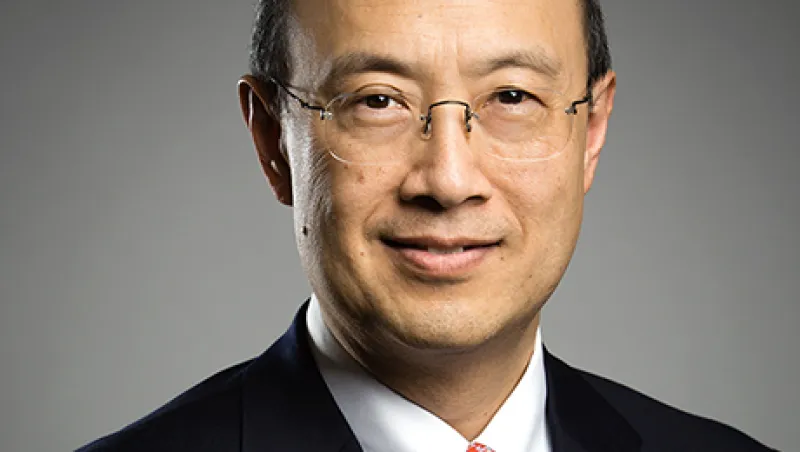Economist, finance professor and investment manager Andrew Lo says some of the “financial weapons of mass destruction” that helped trigger the 2008–’09 crisis can be used for good. If deployed in megafunds by teams of savvy money managers and scientists, he believes, the securitization of intellectual property related to biomedical research could yield lucrative returns while also breathing life into what the biotechnology industry calls the valley of death — neglected early-stage, risky drug development projects for the rarest and most intractable diseases.
But Lo, who has conducted several simulations that he says show this strategy could work, is just the idea guy. “I’m not qualified to manage any of these vehicles,” explains the director of the Laboratory for Financial Engineering at the Massachusetts Institute of Technology’s Sloan School of Management. “I’m hoping to play the role of glorified wedding planner. I’ll bring the bride and groom together; they should know what to do after the wedding.”
Lo, who holds a BA and a Ph.D. in economics from Yale University and Harvard University, respectively, didn’t tackle this problem only out of academic curiosity. He began his investigation after watching several friends and his mother, who lost her battle with lung cancer in 2011, go through treatment.
“A very strange contradiction emerged: Scientists and clinicians are making breakthroughs all the time with regard to drug developments, but the amount of funding that is going into biomedicine is declining,” says Lo, 55, adding, “It seems to be the worst possible time to be pulling money out of the space.”
Lo first proposed the idea of creating a megafund in 2012, when he co-authored a paper in the journal Nature Biotechnology arguing for the securitization of intellectual property related to biotech research as an incentive for investment.
The U.S. government’s funding of medical research has been trending downward since 2004, according to a study published this past January in the Journal of the American Medical Association. The money that is committed tends to be channeled toward diseases that affect large numbers of patients. The private sector hasn’t picked up much of the slack because such projects are expensive, time-consuming and risky.
But if investors can be convinced of well-diversified risk and sufficient returns, Lo believes they’ll take a chance on innovative new treatments for diseases like cancer and Alzheimer’s as well as so-called orphan diseases that each affect fewer than 200,000 people in the U.S., such as Tourette syndrome and amyotrophic lateral sclerosis (Lou Gehrig’s disease).
In the simulation at the heart of their 2012 paper, Lo and his colleagues used data from the Boston-based Tufts Center for the Study of Drug Development to create a mock oncology megafund. They looked at several different sizes of fund, each time splitting it into two tranches of debt — senior and junior — and an equity tranche. Based on hypothetical performance from 1990 to 2011, on average the junior slice would have yielded a return of 8 percent; the senior, 5 percent; and the equity tranche, up to 11 percent.
“I was surprised to learn that the numbers we were getting were pretty reasonable and in conformance with” venture capital industry norms, Lo recalls: “Default rates were very much in line with what you’d expect those yields to be associated with.”
Lo says many institutional investors might be attracted to a real-life version of such a fund, which he and his colleagues tested at sizes ranging from $5 billion to $15 billion. That’s a lot of money to raise, but with enough diversification it should be justified, he contends.
“More projects equal lower risk,” Lo says, emphasizing that not every project or drug in a megafund’s portfolio must be successful for investors to cash in. “We’re just trying to have a few big winners.”
One question that remains is how to value portfolio investments, especially given the uncertainty surrounding the development of new drugs. Lo, who is known for his work in determining what caused the most recent financial crisis, acknowledges that mortgage-backed securities — cousins of the research-backed obligations he’s now proposing — were valued far too optimistically, and that RBOs could suffer the same fate.
“Portfolios of these illiquid assets were not marked to market but rather marked to model, or marked to fantasy, as one trader put it,” he says of MBSs. “Valuations [in megafunds] need to be based on market discipline; otherwise investors can misestimate both their risk and reward, causing them to overinvest or engage in panic selling.”
Lo recommends that those who create megafunds and the people they choose to manage them — he suggests former pharmaceuticals executives, life sciences hedge fund managers or biotech venture capitalists — should have their portfolios regularly valued by third parties, as is now common practice for mortgage portfolios.
Investors may soon be able to see a disease research megafund in action. In February, Lo and his colleagues published another simulation, using data from the National Institutes of Health in Bethesda, Maryland — which conducts more medical research than any other group worldwide — and found that a fund concentrating on its 28 rare-disease projects could achieve average annualized returns of between 12 and 15 percent over 11 years.
“Some investors actually contacted the NIH and said they would be happy to invest if they could get some kind of public-private partnership structure,” says Lo.
That’s not currently legal, but on October 9, Democratic Representative Juan Vargas of California and his Republican counterpart, Thomas Rooney of Florida, introduced a bill that would allow the NIH to create a megafund. This vehicle would be privately owned and operated and would invest in early-stage therapies for rare diseases. In addition to advising the fund, which would operate as a public-private partnership, the NIH would be able to sell it intellectual property in exchange for an equity stake in its portfolio companies.
“The simple truth is that in biotech and life sciences, traditional financing vehicles of private and public equity are becoming less effective,” Vargas says. “The life sciences industry needs novel approaches to early-stage development.”
The megafund model presents this opportunity, according to Vargas. “My legislation merely allows the validity of this approach to be demonstrated by authorizing a pilot program,” he says.
The idea has global appeal: In June, London Mayor Boris Johnson, with whom Lo has discussed his research, suggested that banks, investors and drug companies such as AstraZeneca and GlaxoSmithKline join forces to create a £10 billion ($15 billion) megafund to compete with the U.S.
Robert Langer, a professor of chemical and biological engineering at MIT who has more than 1,000 pharmaceutical, chemical and biotech patents under his belt, is a vocal supporter of Lo. Langer believes the implementation of such megafunds could allow the new drug delivery systems and regenerative medicine techniques that he invents to move from the pages of science papers to the real world.
“I like the idea very much of using financial things for good,” Langer says. “If he’s successful, this will be an out-of-the-box way of thinking about raising funding for research.”






